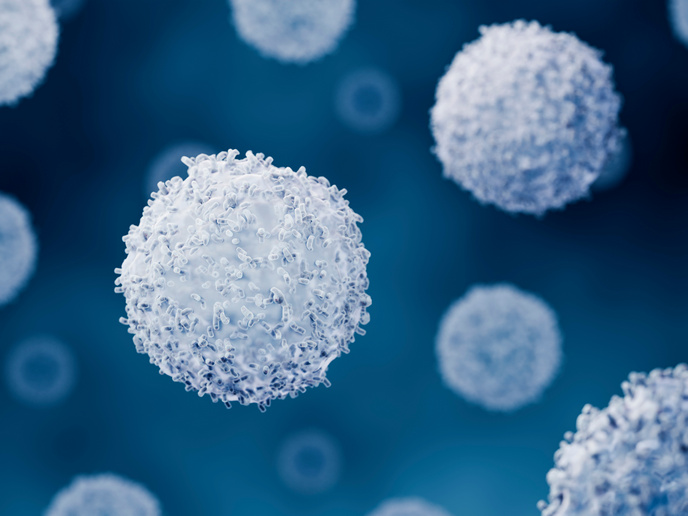Strengthening multifunctional T-cells to fight cancer
Adoptive T-cell therapy (ACT) is an innovative treatment for patients with advanced cancers and who may have a poor prognosis. It involves introducing T-cells – a type of immune cell – into the body to fight the tumour. While the treatment has shown some promise, ACT is hampered by insufficient infiltration of T-cells, poor cell activation at the tumour and suppression of the T-cells by local immune systems. Most efforts to improve ACT have focused on improving cell activation, with limited success. One promising avenue for improving ACT is to use chemokine receptors, which are proteins that can direct therapeutic cells towards the tumour tissue. The technique was developed by Sebastian Kobold at Ludwig Maximilian University of Munich(opens in new window), and uses additional modular receptors able to change the target of the antigen (introduced T-cells). Doing so broadens the repertoire of targetable tumour cells. T-cell activity also vanishes as the antigen decays, minimising side effects. “This tackles two resistance mechanisms to T-cell therapy: the access of T-cells to tumour tissue and antigen heterogeneity,” explains Kobold. In the ARMOR-T project, which was funded by the European Research Council(opens in new window) (ERC), project coordinator Kobold and his colleagues further developed the next generation of ACT through the engineering of T-cells and gene editing suppressive molecules in order to lower levels of immune suppression in the body. “I am proud to have delivered evidence of the utility of chemokine receptors for cell therapy and heralded a mind change in the formerly targeting-centric cell therapy field,” says Kobold.
Showing the efficacy of gene editing in ACT
The ARMOR-T project used in vitro and in vivo testing, as well as patient-derived models to provide the bases for preclinical and clinical development of this pioneering technique. The team ran a series of experiments to prove the feasibility of incorporating gene editing into ACT, and to demonstrate its safety and efficacy. One of the key methods employed was the so-called ‘gene scissor’, CRISPR-Cas9 gene engineering, which allows genes to be cut out and deleted or replaced. The project used models of pancreatic cancer to further explore the impacts of the treatment.
Demonstrating the proof of concept
The most important result from the ARMOR-T project was the successful proof of concept of the strategy, showing that chemokine receptors and modular receptors work in preclinical models. “This is the groundwork for clinical translation in the years to come,” adds Kobold. “We also managed to deliver proof of concept in melanoma, and more studies are ongoing in other entities beyond ARMOR-T.”
Towards the next generation of ACT
The team is now working on next-generation products using machine learning to generate cells adapted to precise characteristics of given tumours – the focus of Kobold’s ERC consolidator grant. “With the help of a proof-of-concept grant, we are now working on a specific target we have identified for therapeutic use,” says Kobold. The team is hoping to eventually translate the results from the ARMOR-T project into clinical therapeutics. “Unfortunately, ‘near future’ is a relative term for cell and gene therapy, where regulatory, production and implementation processes are intense and costly,” he notes.







